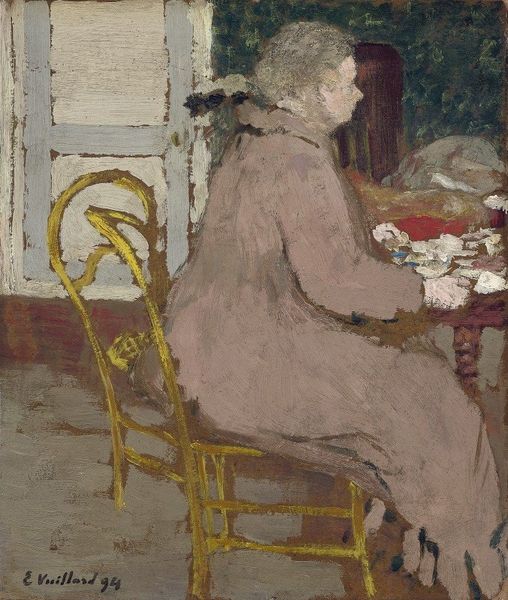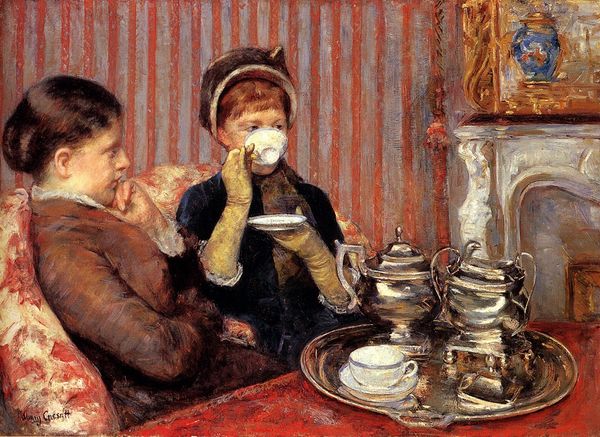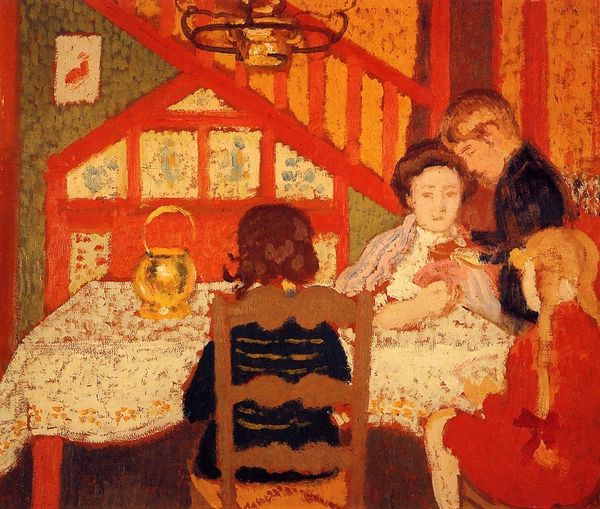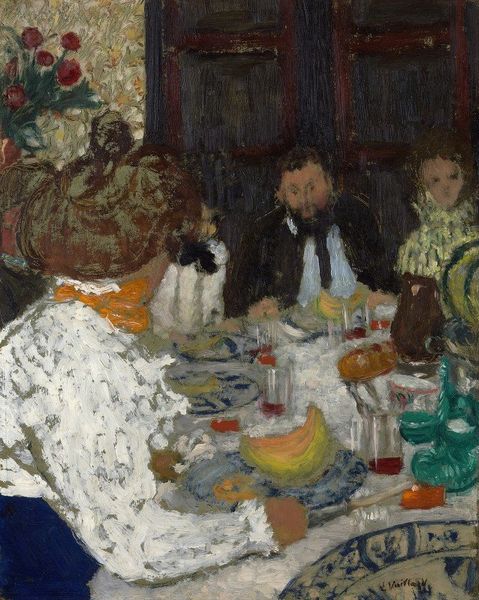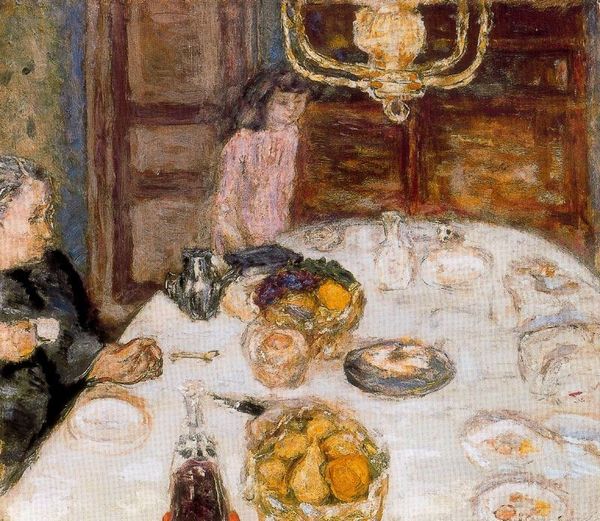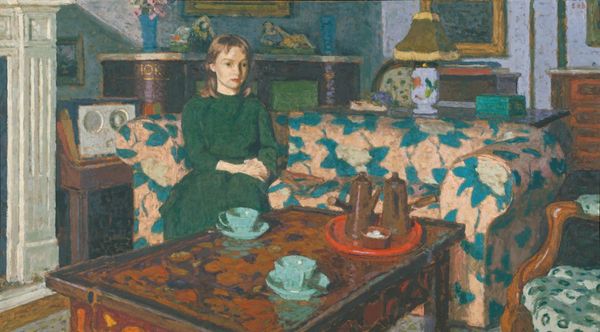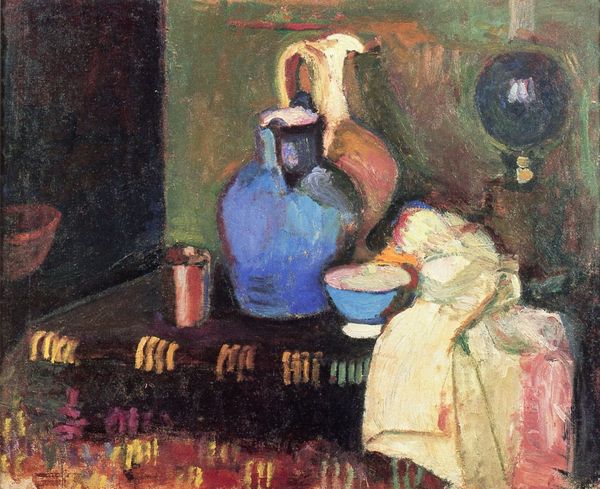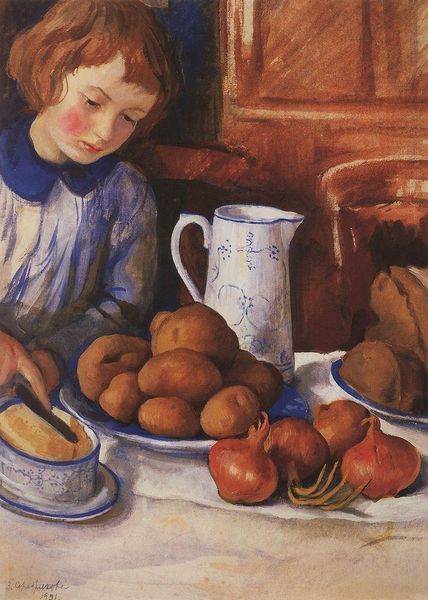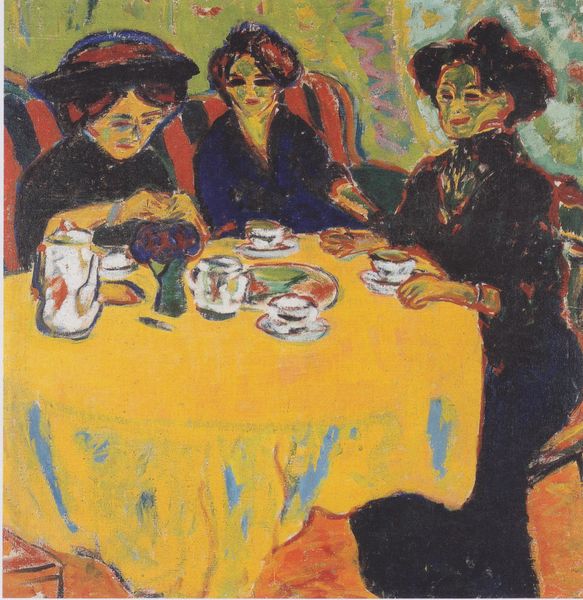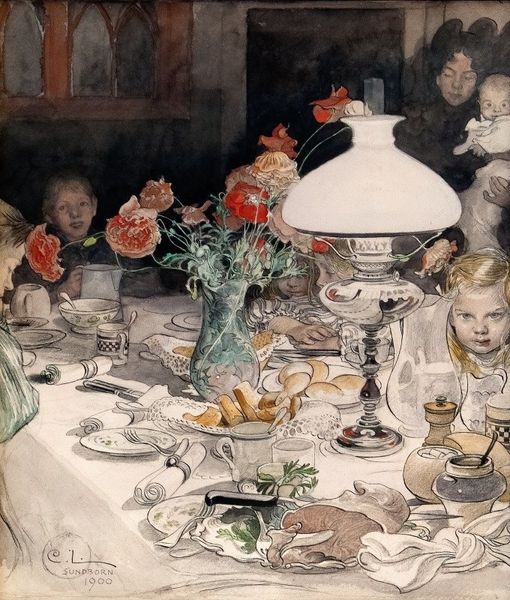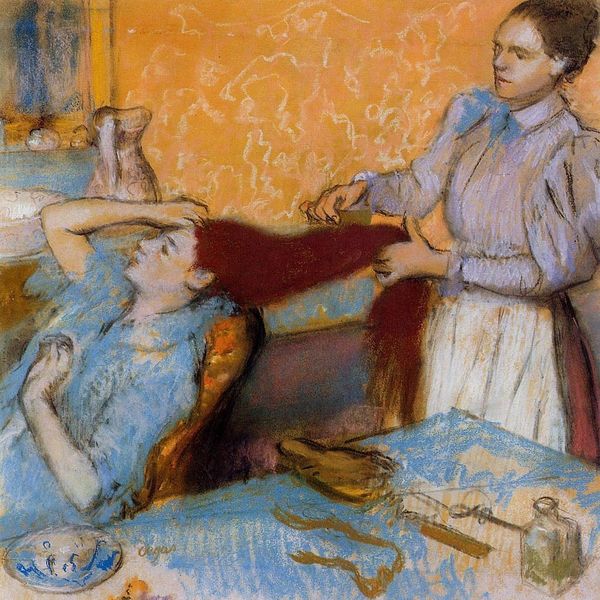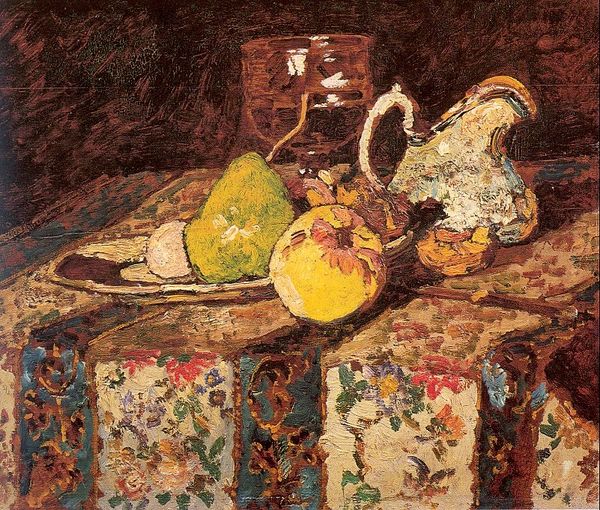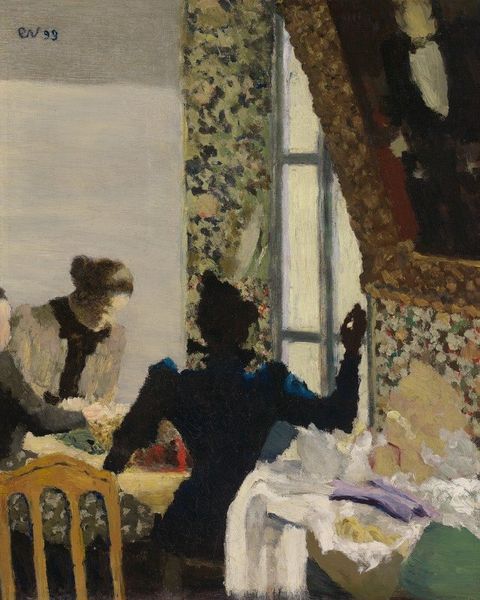
painting, oil-paint
#
portrait
#
painting
#
oil-paint
#
neo-impressionism
#
oil painting
#
intimism
#
painterly
Copyright: Public domain
Curator: Let's consider this delightful intimate interior by Georges Lemmen, titled "Madame Georges Lemmen." Editor: It feels warm and inviting, doesn't it? A real snapshot of domestic life, all cozy colors and soft edges. The subject’s downcast eyes lend it a subdued tone. Curator: It is quite the exemplar of intimism, capturing everyday scenes of bourgeois life. What is interesting is how Lemmen, known for his earlier pointillist work, embraced a looser, more painterly style in renderings like this one. Editor: Yes, those brushstrokes definitely catch the eye. You can really see the texture of the oil paint, particularly in the patterned tablecloth and Madame Lemmen's dress. The materiality contributes significantly to the overall atmosphere, evoking labor and also a bourgeois, manufactured textile that the Lemmen’s would likely consume, as you mentioned. Curator: Precisely, the emphasis on these common objects – the teapot, the sewing, the embroidered elements in the background— speaks to an increasing appreciation of the domestic sphere and its value in contemporary society. How one occupies themselves within these spaces really seems to take hold in artwork produced during this period. Editor: There's a tension, though, right? This almost claustrophobic, hyper-domestic scene exists in stark contrast with broader conversations around production of goods, industrialization, and the shifting dynamics between genders within both home and workplace. How should we situate art like this, of this class, alongside discussions of working life at the time? Curator: Indeed. It asks us to confront how representations, even in these intimate paintings, still serve to construct and reinforce certain values, be they social class or artistic style. It reflects and shapes society. Editor: And thinking materially—about the craft evident in that needlework, or in painting for that matter—and the social value we ascribe it, offers a perspective to understand the production and also, therefore, the conditions that inform that same society. Curator: I'm struck by how art always reflects its cultural and material moment. Editor: Absolutely. This little snapshot asks huge questions.
Comments
No comments
Be the first to comment and join the conversation on the ultimate creative platform.
